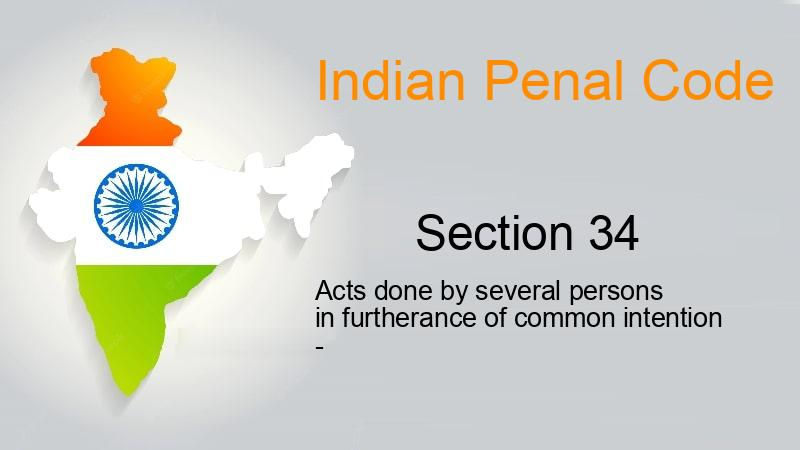Description

Copyright infringement not intended
Picture Courtesy: lawrato.com
Context: The recent Supreme Court clarification on Section 34 of the Indian Penal Code underscores that common intention requires shared purpose and design among all co-accused, without mandating explicit discussions, allowing for its psychological emergence before or during the crime.
Section 34 of the Indian Penal Code (IPC)
- Section 34 of the Indian Penal Code (IPC) is a provision that deals with the criminal liability of several persons who act in furtherance of a common intention.
- It states that when a criminal act is done by several persons in furtherance of the common intention of all, each of such persons is liable for that act in the same manner as if it were done by him alone.
- This means that if two or more people commit a crime together with a shared purpose, they can be held equally responsible for the crime, regardless of their roles or actions. For example, if A and B plan to rob C and in the course of the robbery, A kills C, then both A and B can be charged with murder under Section 34 IPC.
- The rationale behind this provision is to deter people from joining criminal gangs or conspiracies and to punish them for their collective guilt. It also reflects the principle that the act of one is the act of all when they have a common intention.

Summary
- Section 34 IPC is an important provision because it helps to bring justice to the victims of crimes committed by several persons. It also helps to prevent people from escaping liability by claiming ignorance or innocence of their co-accused's actions. It ensures that everyone who participates in a criminal act with a common intention is held accountable for it.
Must Read Articles:
Indian Penal Code: https://www.iasgyan.in/rstv/160-years-of-indian-penal-code
|
PRACTICE QUESTION
Q. How does the criminal justice system in India address issues of efficiency, fairness, and access to justice for all citizens, and what ongoing reforms or challenges exist in ensuring a robust and equitable legal framework?
|















